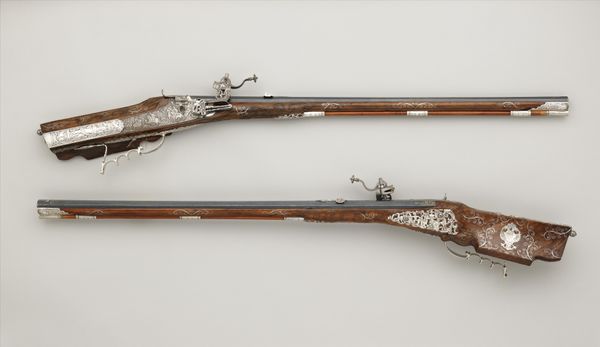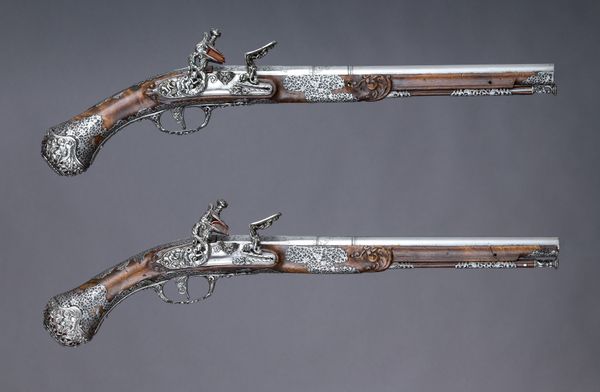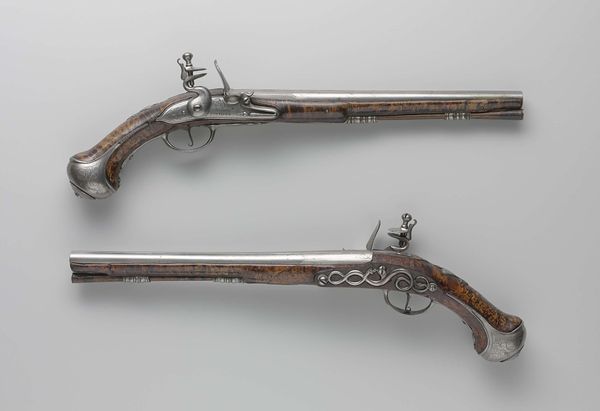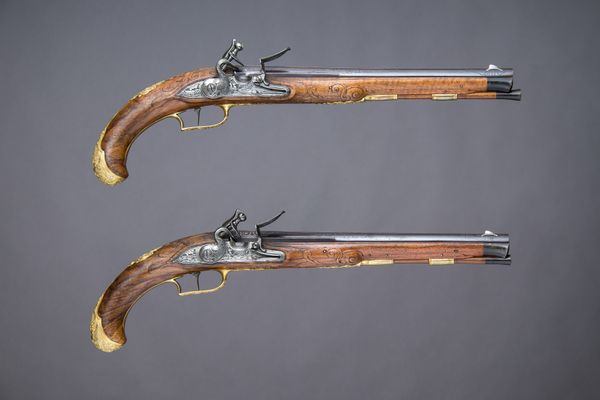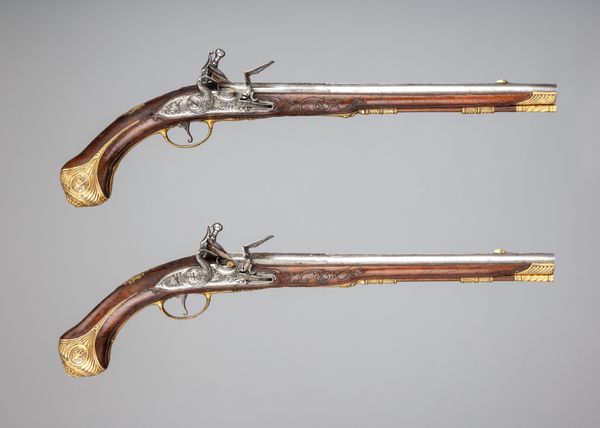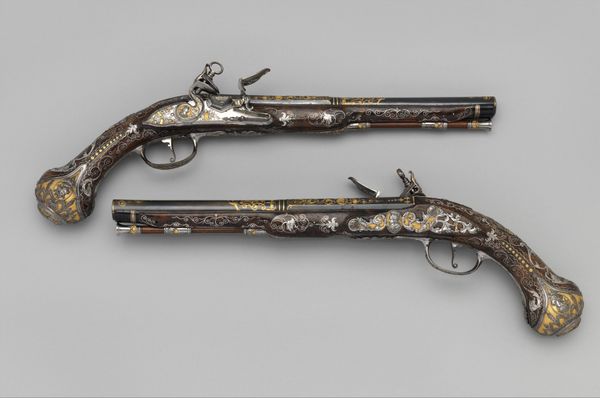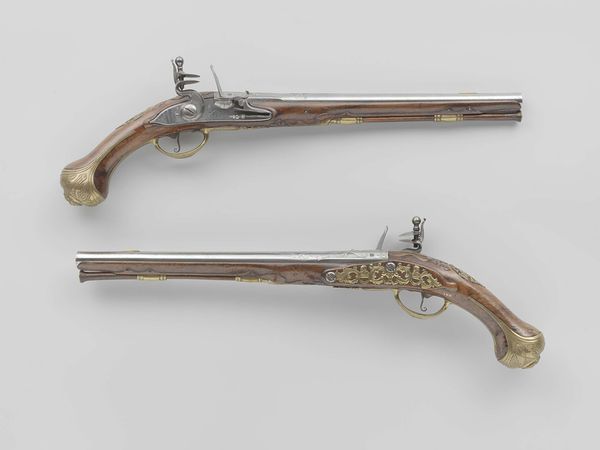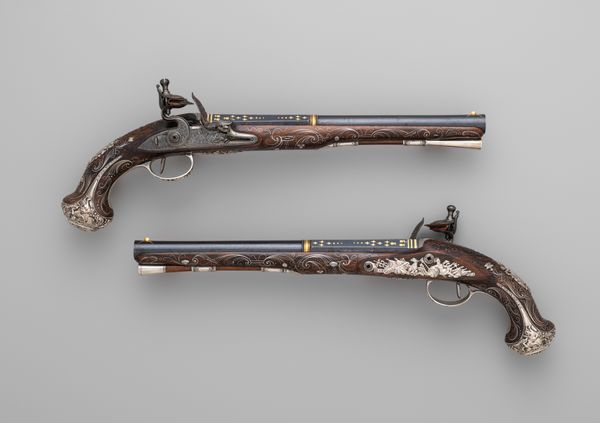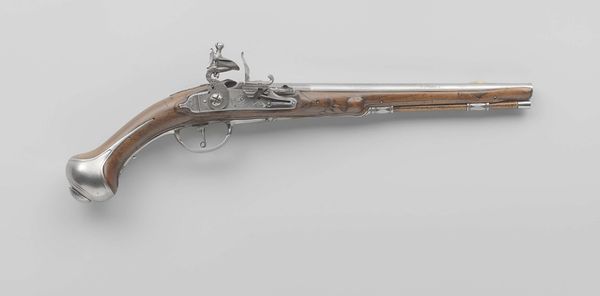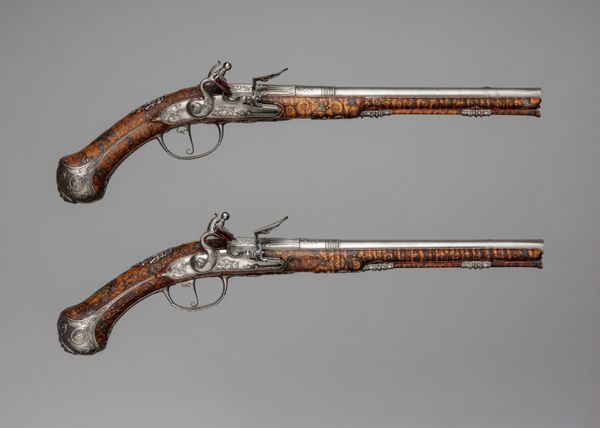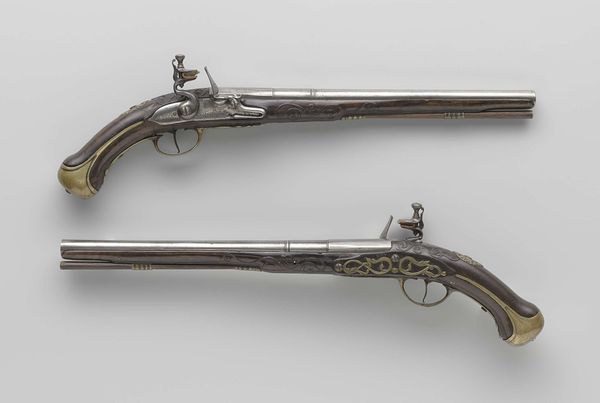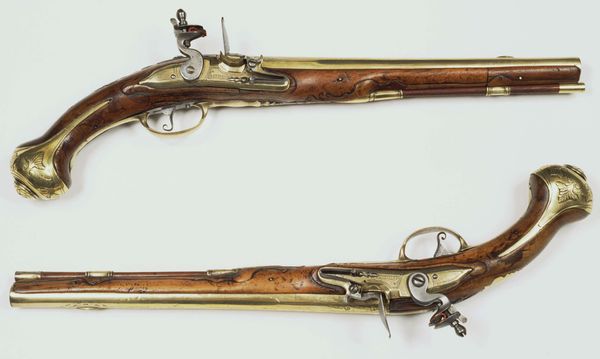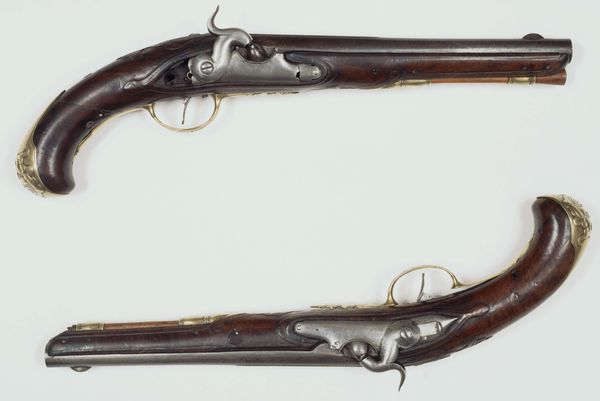
carving, metal, wood
#
weapon
#
carving
#
baroque
#
metal
#
sculpture
#
wood
#
armor
Dimensions: L. of 47.110.1: 22 11/16 in. (57.7 cm); Cal. of 47.110.1: .495 in. (12.6 mm); Wt. of 47.110.1: 2 lb. 3 oz. (997 g); L. of 47.110.2: 22 13/16 in. (57.9 cm); Cal. of 47.110.2: .485 in. (12.3 mm); Wt. of 47.110.2: 2 lb. 3 oz. (1003 g)
Copyright: Public Domain
Curator: Good morning. We're looking at a stunning Pair of Wheellock Pistols, crafted sometime between 1625 and 1675, attributed to Giovan Antonio Gavacciolo. The pieces are a vibrant snapshot from the Baroque era. Editor: Well, "stunning" is one word for it. My first thought? Excess. Those swirling, shimmering metal inlays...It's like someone thought, "How can I make weaponry...blingy?" They remind me a bit of ornate cake decorations! Curator: (Laughing) That’s a refreshing way to look at them! But "excess," as you say, was practically the Baroque's middle name. The socio-political climate favored grand statements, displays of wealth and power. These pistols were status symbols as much as tools. They indicate prestige. Editor: So, not just about shooting things. Though, what’s the story with these wheelocks? They look intricate! Curator: Intricate indeed. They were the next big thing after the matchlock. The wheelock mechanism—essentially a spinning metal wheel against a piece of pyrite—created sparks to ignite the gunpowder. Cutting edge tech, for the time. Though expensive and prone to mechanical failure. These would have been luxury items! Editor: That makes sense given the craftsmanship. But when I look at the carving on the wooden stock—especially those animal forms worked into the design—it makes me think of how the wealthy always seem to find a way to dress up destruction in finery. Even the handles look engraved! Curator: You’ve hit on something vital. Art objects are seldom neutral; their aesthetics intertwine with power structures and their functions. While intended for a singular destructive purpose, they are indeed, works of art and sculpture, created by masterful carving in metal and wood. Editor: I guess what I keep coming back to is the tension. There’s death in every gorgeous swirl of that inlay, every perfectly rendered leaf. It is kind of unnerving and very interesting all at once. Curator: Indeed, their artistic merit forces us to reconsider the object's association with conflict and perhaps recognize them now as an emblem of times past, carefully preserved, their stories untold.
Comments
No comments
Be the first to comment and join the conversation on the ultimate creative platform.
